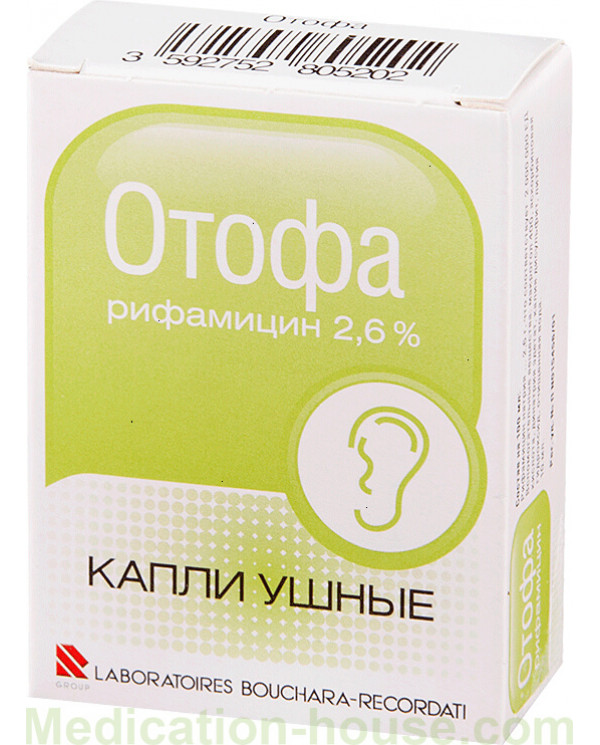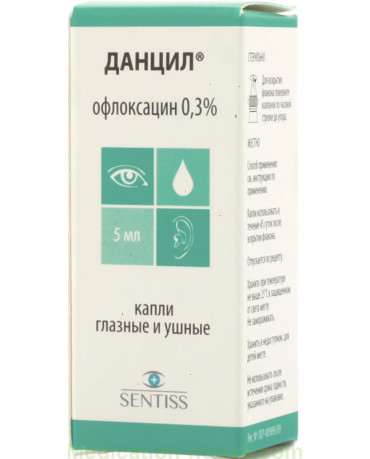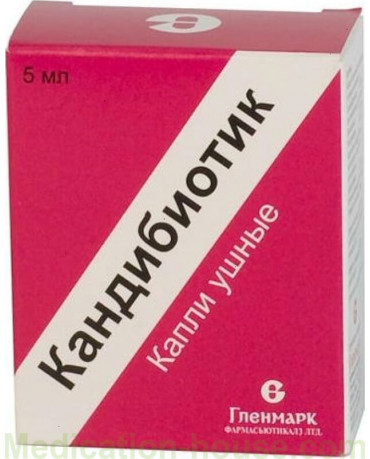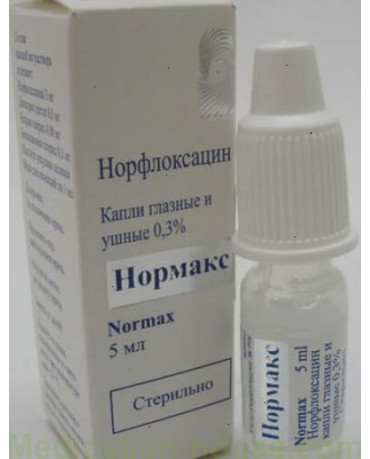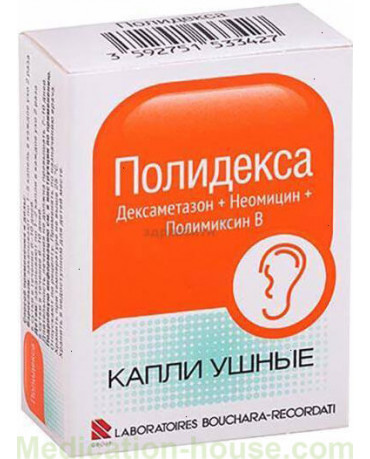Instruction for Otofa
Reed more and buy Otofa here
Composition, release form
The semi-synthetic antibiotic rifamycin sodium (rifamycin) is the main component in Otofa's drop. The auxiliary ingredients are:
polymer - macrogol 400;
vitamin C - ascorbic acid;
organic compound - disodium edetate;
inorganic compound - potassium disulfate;
alkali - lithium hydroxide;
purified water.
Otofa ear drops are a red-orange liquid solution, which is packaged in 10 ml dark glass vials. For ease of use, a plastic pipette cap is provided. The carton contains 1 bottle of medicine and detailed instructions for use.
Pharmachologic effect
The drug has an antibacterial, anti-inflammatory, bactericidal effect. The antibiotic rifamycin has a wide spectrum of effects and is active against most known groups of pathogenic microorganisms. For example, he successfully fights against staphylococcus, meningococcus, gonococcus, pneumococcus and mycobacterium tuberculosis.
Drops are intended for local use, so the active substance penetrates the body through the upper layers of the epidermis of the organ of hearing. The specific binding of the bacterial RNA polymerase by the antibiotic stops the further multiplication of the latter. As a result, pathogenic microorganisms die, the focus of inflammation is eliminated, the symptoms of the disease are stopped.
Pharmacokinetics: when applied topically, the systemic absorption of the drug is extremely insignificant, therefore, studies in this direction have not been carried out.
Indications for use
Acute and chronic otitis media of the external or middle ear is the main indication for the appointment of Otofa drops. Other indications for use:
purulent otitis media;
organic lesion of the tympanic membrane;
condition after surgery on the middle ear (to prevent the development of infection).
It is also prescribed for otitis media complicated by perforation of the tympanic membrane. This indication is a huge plus for Otofa over other ear drops.
Instructions for use
The instructions for use for children and adults indicate the following standard dosages:
adults - 5 drops in one ear;
children - 3 drops.
Before use, the bottle with drops must be warmed in the palms of your hands. The drug is used 3 times a day, the duration of treatment is no more than 7 days. If during this period the symptoms of the disease have not passed, then it is necessary to consult a specialist. Sometimes nasal drops are prescribed.
The healing solution can also be poured into the ear for a few minutes 2 times a day. Washing is carried out as follows:
The medicinal solution is poured into the sore ear, left for 2-3 minutes.
Then the head is tilted with the sore ear down, the remaining liquid is removed with a cotton swab or cotton swab.
Sessions are desirable in the morning and evening before bedtime.
The duration of such therapy is 5-7 days. As a rule, pain, a feeling of congestion and discomfort in the ears disappear on the 3rd day from the start of treatment.
Otofa drops should not be used for pregnant women and during lactation. If, for some reason, the drug is prescribed to this group of patients, then it is used with extreme caution, strictly following the recommended dosage regimen.
Contraindications, side effects, overdose
Allergy to the antibiotic rifamycin is the main and only contraindication to the use of Otofa's drop. The drug should be used with caution in people with jaundice, renal diseases, infectious hepatitis (transferred less than a year ago). Due to the lack of clinical studies, the drug is not recommended to be prescribed during pregnancy and lactation.
Local side effects may occur during the treatment period. These include:
allergic skin reactions (itching, rash, hyperemia);
staining of the tympanic membrane in yellow (in the study of otoscopy).
Medication overdose is unlikely because the active substance is practically not absorbed into the systemic circulation.
Special instructions
Specific recommendations include:
Drinking alcohol while treating Otofa is not prohibited. Although many doctors do not recommend this combination. Alcohol has the ability to reduce immunity, which allows pathogenic microorganisms to continue to actively multiply. Therefore, it is possible that the therapeutic effect of the drug will be weak or completely absent.
It should be borne in mind that alcoholic beverages negatively affect the cardiovascular system and internal organs, and antibiotics only enhance their harmful effects. As a result, the possible appearance of various diseases and side effects.
It is not recommended to simultaneously use Otofa drops with other topical drugs for the treatment of otitis media. The active substances of drugs can enter into an unpredictable physicochemical reaction, which can lead to undesirable consequences.
With prolonged use of Otofa drops, bacteria strains that are resistant to the active substance of the drug may appear.
The composition of the therapeutic solution contains sulfates, which must be taken into account when prescribing to patients with hypersensitivity to sulfur.
To avoid infection when instilling the drug, the tip of the pipette should not touch the skin and other surfaces.
Avoid getting the solution on any tissue, because it may leave hard-to-remove yellow stains on it.
Storage conditions
The shelf life of Otofa is 3 years from the date of production. After opening, the shelf life of the medicinal solution is 6 months. Store drops at room temperature in a dark place protected from the access of children.
Reviews
Vera, 33 years old
Several years ago, Otofa drops cured otitis media in my child. At first the pediatrician prescribed Otipax, but they did not help at all. Then he prescribed Otofa. A positive result appeared 2 days after the start of treatment. My daughter stopped complaining about her ears. The symptoms of the disease completely disappeared after 5 days. There were no side effects. The only nuisance is the yellowing of the skin around the ears. But this is more likely not a drawback, but a specific feature of the drug.
Tatiana, 47 years old
Otofa drops are always in our home medicine cabinet, because otitis media often worries me and my eldest son. At the first signs of the disease, I immediately begin to drip drops into each ear. The disease does not have time to develop and recedes. The drug has never failed. I want to note its effectiveness, safety and availability. The price for Otofa is low compared to other similar products. Recommend!
Varvara Petrovna, 56 years old
I managed to get sick with otitis media in the summer at sea (apparently water got into my ears). First, a runny nose appeared, on the second day my ears hurt. I was very upset because the vacation was coming to an end, and I wanted to enjoy the last days of rest. The pharmacy advised a choice of several ear drops with antibiotics. I bought Otofa because they were the cheapest. Used as indicated in the instructions for use. I felt relief after the first instillation. After 2 days, the signs of the disease disappeared. But I continued my treatment. I didn't think the remedy would help so quickly. Recommend! Yes, if drops get on the skin, it will turn yellow. Consider this!
Terms of sell
You don't need a prescription to buy Otofa.

